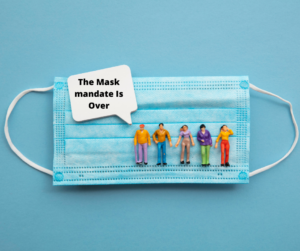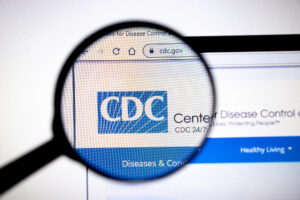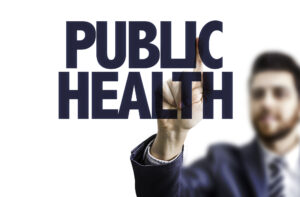SOME OF US MIGHT NOT LIKE THE DECISION – BUT THE LEGAL REASONING WAS SOUND
Don’t you want to know what it was? Here’s an assessment down the middle

Judge Kathryn Mizelle, District Court Judge for the Middle District of Florida, decided to vacate the mask mandate on the following reasoning:
- The CDC, like any federal agency, only has the specific powers given to it by Congress, and the mandate went beyond those powers;
- The CDC bypassed the normal process of putting any new regulation up for public review and comment for a period of 30 days, and the judge found that the pandemic was not enough of an emergency to bypass this process; and
- She also found that the mask mandate was “arbitrary and capricious”, because the reasoning for the rule should have been spelled out in more detail in the text of the rule itself, and the agency cannot come up with new reasons when the rule is challenged in court.
In the opinion of this writer, the judge is on more solid ground on points 1 and 2 than she is on point 3, but if the Government appealed the decision, it would be upheld if any of the 3 grounds were found to be valid by the appellate court.
 Does this Ruling apply all over the United States?
Does this Ruling apply all over the United States?
Yes, it does mean that the CDC did not have the authority to validly enact the mask mandate, and unless the Government goes to the Circuit Court of Appeals for the 11th Circuit and gets a stay, the federal mask mandate is over. The mask mandate was scheduled to expire on May 3, 2022 anyway, but if this ruling had not been made, the CDC might have extended it again. Because this was a final judgment that decided the entire case against the CDC, it applies nationwide. The Government has not said it if it will appeal, but in my opinion, that’s very unlikely and if they do appeal, they will lose for various reasons.
Although airlines are now making masks voluntarily, the MTA is still requiring them. Can they do that?
Yes, because NY state has its own mandates, and states have much broader powers to do things like this than the federal government does. It was always intended that public health would be regulated by the states, and federal laws on this would be limited to those powers specifically given to these agencies by Congress.

The CDC
Does This Mean that the CDC Can Never Make a Rule Like This?
No. She “remanded” the rule back to the CDC, which allows them to formulate some other rule(s) to accomplish the same purpose, and to comply with some of the technical rule-making problems upon which the decision was based.
FOR THOSE WHO WANT TO LOOK UNDER THE HOOD:
Each of the judge’s reasons are discussed further below
It is true that Judge Mizelle was appointed as a federal judge by Donald Trump in 2020, after she had been a lawyer for only 8 years, and that a majority of the American Bar Association found her “unqualified”, pointing out that she had never tried a case in any court.
However, the caliber of the writing and reasoning does measure up to we see from federal judges. While the reasoning is somewhat designed to reach a certain result, in fairness, this is done by liberal judges as well as by conservative ones. Her reasoning is also in line with many conservative judges, including many who were on the bench before Trump became president, who feel federal agencies have too much power, and would like to put more limits on those powers.
 Reason # 1: The CDC only has the power that Congress gave it. In this case, which comes from the Public Health Services Act of 1944, 42 U.S.C. § 264, the first part of which reads as follows:
Reason # 1: The CDC only has the power that Congress gave it. In this case, which comes from the Public Health Services Act of 1944, 42 U.S.C. § 264, the first part of which reads as follows:
- Promulgation and enforcement by Surgeon General. The Surgeon General, with the approval of the Administrator [Secretary], is authorized to make and enforce such regulations as in his judgment are necessary to prevent the introduction, transmission, or spread of communicable diseases from foreign countries into the States or possessions, or from one State or possession into any other State or possession. For purposes of carrying out and enforcing such regulations, the Surgeon General may provide for such inspection, fumigation, disinfection, sanitation, pest extermination, destruction of animals or articles found to be so infected or contaminated as to be sources of dangerous infection to human beings, and other measures, as in his judgment may be necessary.
She decided the CDC has no power under this subsection to impose a mask mandate because this only lets the CDC do: “inspection, fumigation, disinfection, sanitation, pest extermination, destruction of animals or articles found to be so infected or contaminated as to be sources of dangerous infection to human beings, and other measures.” Her reasoning was that all of the things in this subsection were being done to things, rather than to people. Therefore, even though it says “and other measures”, it would have to be other measures the CDC did to things, rather than people. Most previous decisions upheld actions taken by the CDC under the “and other measures” clause but interpreting it the way she did was not illogical. Again, in the opinion of this writer, we are going to see a trend in the courts moving away from giving such open-ended powers to federal agencies.
The rest of the subsections that come after the paragraph above do give the Surgeon General power to quarantine and confine people, which is a much stronger power, but only covers people reasonably believed to have the communicable disease. The mask mandate applies to everyone who uses any kind of public transportation, and is clearly not limited to people reasonably believed to have COVID 19. The Government argued that it was covered under “sanitation”, she found that the word “sanitation”, in this context, referred only to cleaning something, as opposed to keeping something clean. Judicial interpretations like this are made all the time.
 Reason # 2: The Mask Mandate, like any new rule made by any federal agency have to be published in a book called the Federal Register, and held open for review and comment by members of the public for at least 30 days. This is required under the Administrative Procedure Act, 5 U.S.C. § 553(c). The federal mandate on evictions was also struck down on this ground. Notice and comment does not apply “when the agency for good cause finds (and incorporates the finding and a brief statement of reasons therefor in the rules issued) that notice and public procedure thereon are impracticable, unnecessary, or contrary to the public interest.” 5 U.S.C. § 553(b)(B). The agency’s statement included the facts that some COVID variants were highly contagious and could be transmitted by people without symptoms. However, she correctly pointed out that in the text of the rule, the CDC’s reasoning for bypassing this requirement was very skimpy, and other agencies had included much more extensive justifications for bypassing this process. The judge reasons for this part of the decision was as follows:
Reason # 2: The Mask Mandate, like any new rule made by any federal agency have to be published in a book called the Federal Register, and held open for review and comment by members of the public for at least 30 days. This is required under the Administrative Procedure Act, 5 U.S.C. § 553(c). The federal mandate on evictions was also struck down on this ground. Notice and comment does not apply “when the agency for good cause finds (and incorporates the finding and a brief statement of reasons therefor in the rules issued) that notice and public procedure thereon are impracticable, unnecessary, or contrary to the public interest.” 5 U.S.C. § 553(b)(B). The agency’s statement included the facts that some COVID variants were highly contagious and could be transmitted by people without symptoms. However, she correctly pointed out that in the text of the rule, the CDC’s reasoning for bypassing this requirement was very skimpy, and other agencies had included much more extensive justifications for bypassing this process. The judge reasons for this part of the decision was as follows:
- the regulation was put into effect in February 2021, thirteen months after the Secretary of Health and Human Services had declared a public health emergency, so another 30 days would not have mattered that much;
- The rule was enacted two weeks after the President’s executive order, so the review and comment procedure would only have taken an additional two weeks; and
- The agency is not required to publish the entire rule – they could have done the notice and comment procedure on a rough outline of it, so holding the review and comment procedure open for another two weeks would not have made that much difference.
In the opinion of this writer, i) above was nonsense because she forgot to mention that Trump was the president until January 20, 2021, and Trump would not have allowed the CDC to impose any mask mandate, but II) and iii) were very arguably validly reasons, because bypassing this process is not something that can be done lightly.
 Reason # 3: The decision holds the mandate “arbitrary and capricious” because it fails to explain the reasoning, for example, she criticized the CDC for not giving its reasoning for rejecting other alternatives, such as testing, temperature checks, or occupancy limits in transit hubs and conveyances. The rule also fails to explain why all masks-homemade and medical-grade-are sufficient. The judge also criticized the decision for not explaining why it exempts individuals who are “eating, drinking, or taking medication” and a person who is “experiencing difficulty breathing” or who is “feeling winded,” and for failing to explain why a two year old I less likely to transmit the disease than a 62 year old.
Reason # 3: The decision holds the mandate “arbitrary and capricious” because it fails to explain the reasoning, for example, she criticized the CDC for not giving its reasoning for rejecting other alternatives, such as testing, temperature checks, or occupancy limits in transit hubs and conveyances. The rule also fails to explain why all masks-homemade and medical-grade-are sufficient. The judge also criticized the decision for not explaining why it exempts individuals who are “eating, drinking, or taking medication” and a person who is “experiencing difficulty breathing” or who is “feeling winded,” and for failing to explain why a two year old I less likely to transmit the disease than a 62 year old.
In the opinion of this writer this ground was ridiculously nitpicky, and if it was upheld by the appellate courts, it would effectively take away the power of federal agencies to make rules, not only for public health, but for any reasons at all. However, I think we will see a trend toward requiring all federal agencies to spell out better explanations for any rules they make, which may not be an entirely bad thing.

